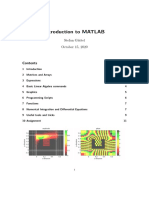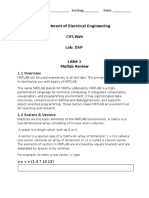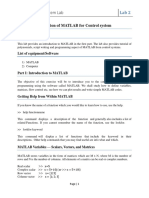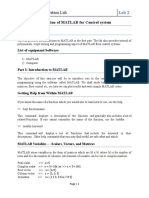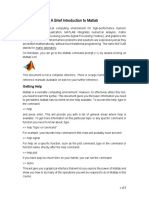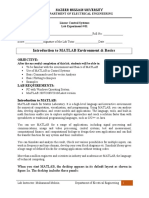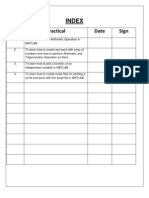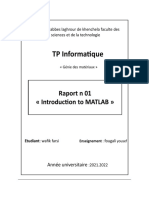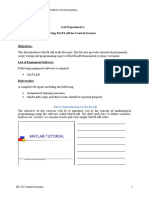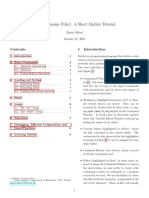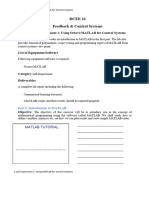0% found this document useful (0 votes)
39 views14 pagesControl Theory II LAB 1
The document provides an overview of the syllabus for a Control Theory II lab. It covers basic MATLAB commands, transfer functions, system characteristics and responses, system interconnections, state space systems, root locus analysis, stability analysis using Nyquist plots, and analysis and design of PID controllers.
Uploaded by
BAHAALDEEN MOHAMMEDCopyright
© © All Rights Reserved
We take content rights seriously. If you suspect this is your content, claim it here.
Available Formats
Download as PDF, TXT or read online on Scribd
0% found this document useful (0 votes)
39 views14 pagesControl Theory II LAB 1
The document provides an overview of the syllabus for a Control Theory II lab. It covers basic MATLAB commands, transfer functions, system characteristics and responses, system interconnections, state space systems, root locus analysis, stability analysis using Nyquist plots, and analysis and design of PID controllers.
Uploaded by
BAHAALDEEN MOHAMMEDCopyright
© © All Rights Reserved
We take content rights seriously. If you suspect this is your content, claim it here.
Available Formats
Download as PDF, TXT or read online on Scribd
/ 14
